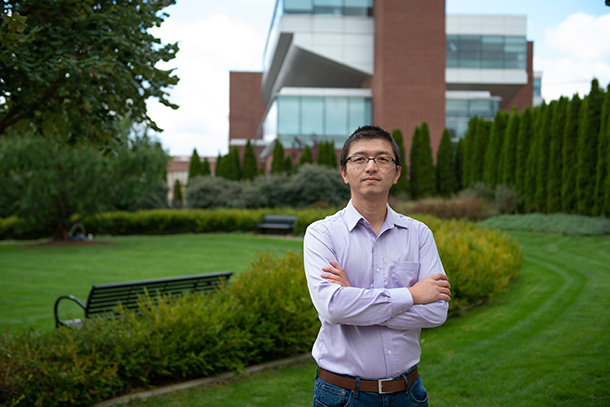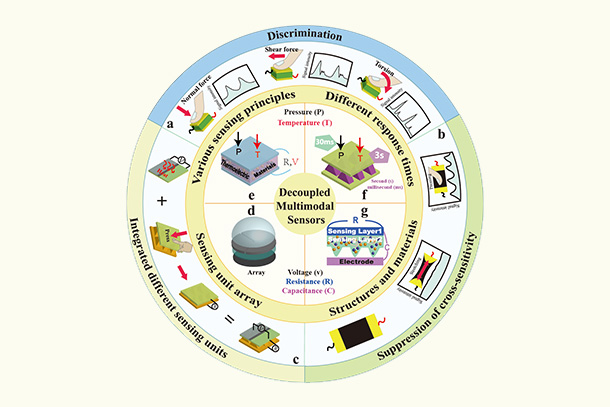
A review article by Larry Cheng, assistant professor of engineering science and mechanics at Penn State, has been accepted for publication by Advanced Science. Credit: Kelby Hochreither/Penn State
Researcher’s analysis could help with understanding, future development of multimodal sensors
July 19, 2022
By Mary Fetzer
By UNIVERSITY PARK, Pa. — A study led by Huanyu “Larry” Cheng, James L. Henderson, Jr. Memorial Associate Professor of Engineering Science and Mechanics in the Penn State College of Engineering, examined the ways to decouple input signals for multimodal sensors, which is important for avoiding complicated signal processing steps and allowing for high accuracy with the multimodal sensors.
The review article was published in Advanced Science.
Highly sensitive and multimodal sensors have recently emerged for a wide range of applications, such as bioelectronics, robotics, health monitoring devices and human-machine interfaces. However, when multiple input signals — such as pressure, temperature and strain — are present, it can be difficult to isolate the target input signal that scientists are trying to measure in order to manipulate dexterous objects with robotic hands or accurately inform health/disease conditions.

A review article by Penn State researchers examines the evolution of multimodal sensors in detecting numerous input signals from discrimination and interference suppression to decoupling. Advanced Science has accepted the paper for publication. Credit: Ruoxi Yang/Penn State
“The selection of the multifunctional materials and the design of the sensor structures play a significant role in multimodal sensors with decoupled sensing mechanisms,” Cheng said.
The article covers the team’s review of early efforts that explored different output patterns to distinguish the corresponding input signals applied to the sensor in sequence. The article then discusses methods to suppress the influence of other input stimuli on the output signal. In their review, the researchers note that it is possible to integrate the sensors with different sensing principles, exhibiting minimized interference. Additionally, the researchers note in the article that novel materials and structures can provide multiple sensing mechanisms in a single sensing unit to give multiple different outputs to simultaneously detect multiple inputs. The study highlights insights into the materials’ properties, structure effects and sensing mechanisms in recognition of different input signals.
By understanding the current limitations and identifying future opportunities with the help of Cheng’s analysis, researchers can better work on the next generation of flexible, stretchable and truly multimodal sensors, according to the researchers.
In addition to his appointment in engineering science and mechanics, Cheng is affiliated with the Materials Research Institute, the Institutes of Energy and the Environment, the Institute for Computational and Data Sciences and the College of Earth and Mineral Sciences. He is also affiliated with the departments of Industrial and Manufacturing Engineering, Architectural Engineering, Biomedical Engineering and Mechanical Engineering.
Contributors to this review article include Han Yan and Tiejun Li, both affiliated with Hebei University of Technology School of Mechanical Engineering; Wanqing Zhang, doctoral student, and Naveen Tiwari, postdoctoral researcher, both with the Penn State Department of Engineering Science and Mechanics; and Ruoxi Yang, affiliated with both Hebei University and Penn State.
The National Science Foundation, National Institutes of Health, Hebei University of Technology and Penn State supported this research.



